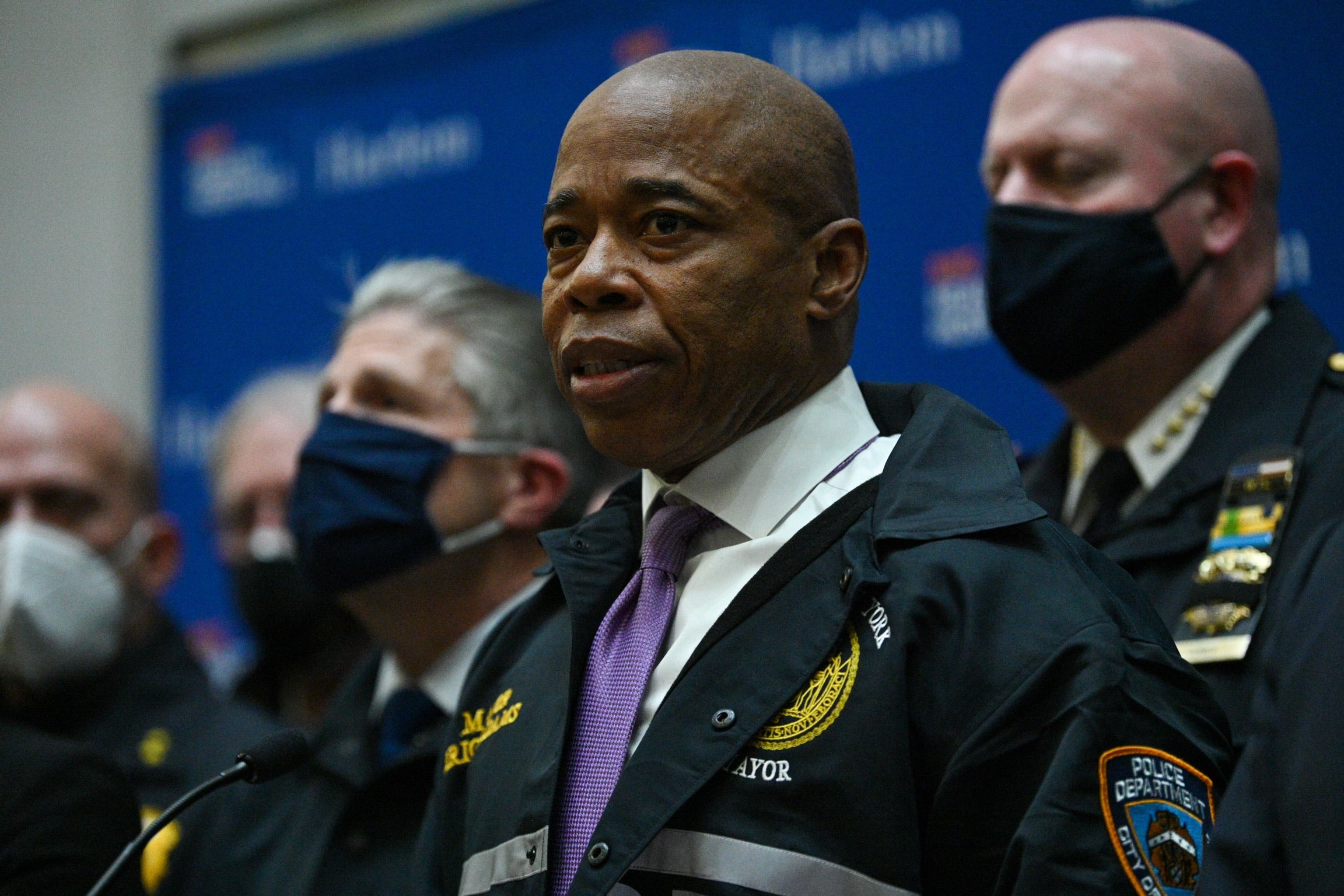Wilbert Mora: Second of two New York police officers dies of injuries after Harlem shooting
New York City mayor Eric Adams is pushing for increased policing after a string of high-profile shootings
The second of two New York City police officers who were grievously harmed during a shooting on Friday night in Harlem has died, officials announced, in a high-profile case that has inspired calls for new public safety plans from mayor Eric Adams and others.
Officer Wilbert Mora, 27, had been in critical condition since the shooting took place during a domestic violence on Friday in Harlem. Doctors weren’t able to save him after two surgeries to remove a bullet lodged in his brain.
“Wilbert is 3 times a hero,” wrote New York City police commissioner Keechant Sewell in a statement on Tuesday on Twitter. “For choosing a life of service. For sacrificing his life to protect others. For giving life even in death through organ donation. Our heads are bowed and our hearts are heavy.”
Officer Mora’s partner, Jason Rivera, 22, died on Friday evening. The shooting marks the first time two on-duty officers were killed in the same incident since 2014.
The pair were called to the Harlem neighbourhood on Friday evening to a domestic call, where a woman said her adult son, identified by police as Lashawn McNeil, had threatened her.
As the men approached a room inside the woman’s apartment that McNeil was occupying at the time, the 47-year-old began shooting, striking both officers, according to police. A third officer on the scene shot McNeil as he left the apartment, and he died on Monday from his injuries.
The shooting has fed into a larger conversation in the city about the future of public safety.
New York City mayor Eric Adams detailed on Monday how he is planning to reinstate a controversial plainclothes police unit that’s been accused of racial profiling and brutal tactics, after a spate of a number recent high-profile shootings.
“We will not surrender our city to the violent few,” Mr Adams, a former New York Police Department (NYPD) officer, said on Monday as part of a newly announced slate of policies to combat gun violence. “I want to be clear: This is not just a plan for the future — it is a plan for right now ... gun violence is a public health crisis. There is no time to wait.”

In addition to the shooting of officers Mora and Rivera, an 11-year-old was struck by a stray bullet in the Bronx borough last week.
The mayor’s plan would see hundreds of officers assigned to teams across the city over the next three weeks, deploying to the 30 precincts where the mayor’s team estimates 80 per cent of violent crime occurs.
Officers in the so-called Neighborhood Safety Teams would remain in plainclothes though still be identifiable by some manner as police officers, and would carry body cameras, according to the mayor’s office.
The NYPD’s plainclothes anti-crime unit was disbanded in 2020, as weeks of Black Lives Matter protests captivated the city.
“This is 21st-century policing,” then-police commissioner Dermot Shea said of his move to dissolve the units, which have been accused of unconstitutional and violent treatment of communities of colour. “The key difference — we must do it in a manner that builds trust between the officers and the community they serve.”
The unit was criticised as a vestige of New York’s “stop and frisk” era of policing, where officers would stop and search individuals on the street without a warrant. The practice, found unconstitutional in federal court in 2013, overwhelmingly singled out Black and Latinx New Yorkers for suspicion.
“The anti-crime unit was primarily tasked with doing these stops. And they would do them violently,” Jenn Borchetta, a managing director at the legal non-profit Bronx Defenders, told NPR. “They would throw people against walls. I mean, we have one client who is 13 years old who was thrown against the hood of a car. Just for crossing the street.”
In addition to more aggressive enforcement, the mayor has proposed expanded summer employment and youth engagement programmes, as a way to reach the estimated 250,000 young people aged 16 to 24 in New York who are neither in school or employed and are vulnerable to engaging in illegal activity.
He also called for state lawmakers to expand the use of pre-trial detention of violent crime suspects, and to allow for teenagers accused of violent crime to be tried in regular criminal court.
Jumaane Williams, the New York City public advocate and a candidate for governor, called for more resources to community health and intervention resources, rather than tougher policing.
“We can build safer, stronger communities without relying on strategies which in the past have inflicted lasting harm,” Mr Williams said on Monday. “This is not a time to lose the lessons that we have learned.”
Crime has indeed spiked in New York City during the economic and social dislocation of the pandemic years, but remains well below historic highs.
Major “index” crimes are down 11 per cent since 2013, and nearly 50 per cent since 2000, according to an NYPD from December.
Still, Mr Adams ran on his public safety bona fides, and the present fear of crime among some in the city will be an early test of his priorities and effectiveness. The pandemic crime spike has caused some of the biggest jumps in crime levels in the last five years, including the most murders in nearly a decade.



Bookmark popover
Removed from bookmarks